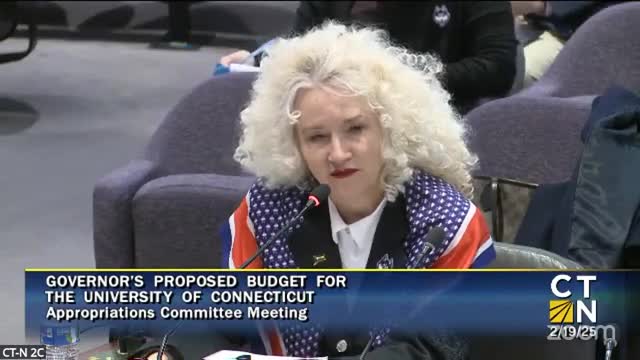University of Connecticut boosts student support with $250M in financial aid initiatives
February 19, 2025 | 2025 Legislature CT, Connecticut
This article was created by AI summarizing key points discussed. AI makes mistakes, so for full details and context, please refer to the video of the full meeting. Please report any errors so we can fix them. Report an error »

In a recent meeting of the Connecticut Appropriations Committee, university officials expressed deep concern over the rising costs of tuition and fees, emphasizing the need to maintain affordability for students. The discussions highlighted the challenges of balancing operational costs while striving to enhance educational quality and accessibility.
Over the past three years, the University of Connecticut (UConn) has made significant strides in meeting the goals set by the governor, which included increasing student enrollment, boosting research funding, and enhancing fundraising efforts. UConn reported an increase in student acceptance, with 1,300 new students welcomed last year, maintaining a strong representation of Connecticut residents at 73%. The university also achieved its highest research expenditures to date, generating an additional $16 million beyond projections, a testament to the faculty's commitment to investing in Connecticut.
Fundraising efforts have also seen a remarkable increase, averaging $130 million over the last three years compared to $80 million in the previous period. This financial growth is crucial as UConn aims to generate new revenue streams without compromising academic excellence.
The university has also focused on supporting its students, particularly first-generation college attendees, who make up a significant portion of the student body. Financial support for students has surged from $170 million to $250 million in just three years. Notably, the graduation rate for first-generation students has improved from 88% to 92%, reflecting UConn's commitment to student success.
Nathan, a university representative, highlighted the importance of the Roberta Willis program, which provides approximately $13.6 million in financial aid to students with significant financial needs. However, he cautioned about potential funding challenges ahead, particularly with the expiration of ARPA funding, which could impact future financial support for students.
As UConn navigates these financial complexities, the focus remains on ensuring that all students, especially those from underrepresented backgrounds, have the resources they need to succeed in their educational journeys. The discussions at the meeting underscored a collective commitment to maintaining educational excellence while addressing the growing financial needs of students.
Over the past three years, the University of Connecticut (UConn) has made significant strides in meeting the goals set by the governor, which included increasing student enrollment, boosting research funding, and enhancing fundraising efforts. UConn reported an increase in student acceptance, with 1,300 new students welcomed last year, maintaining a strong representation of Connecticut residents at 73%. The university also achieved its highest research expenditures to date, generating an additional $16 million beyond projections, a testament to the faculty's commitment to investing in Connecticut.
Fundraising efforts have also seen a remarkable increase, averaging $130 million over the last three years compared to $80 million in the previous period. This financial growth is crucial as UConn aims to generate new revenue streams without compromising academic excellence.
The university has also focused on supporting its students, particularly first-generation college attendees, who make up a significant portion of the student body. Financial support for students has surged from $170 million to $250 million in just three years. Notably, the graduation rate for first-generation students has improved from 88% to 92%, reflecting UConn's commitment to student success.
Nathan, a university representative, highlighted the importance of the Roberta Willis program, which provides approximately $13.6 million in financial aid to students with significant financial needs. However, he cautioned about potential funding challenges ahead, particularly with the expiration of ARPA funding, which could impact future financial support for students.
As UConn navigates these financial complexities, the focus remains on ensuring that all students, especially those from underrepresented backgrounds, have the resources they need to succeed in their educational journeys. The discussions at the meeting underscored a collective commitment to maintaining educational excellence while addressing the growing financial needs of students.
View full meeting
This article is based on a recent meeting—watch the full video and explore the complete transcript for deeper insights into the discussion.
View full meeting
